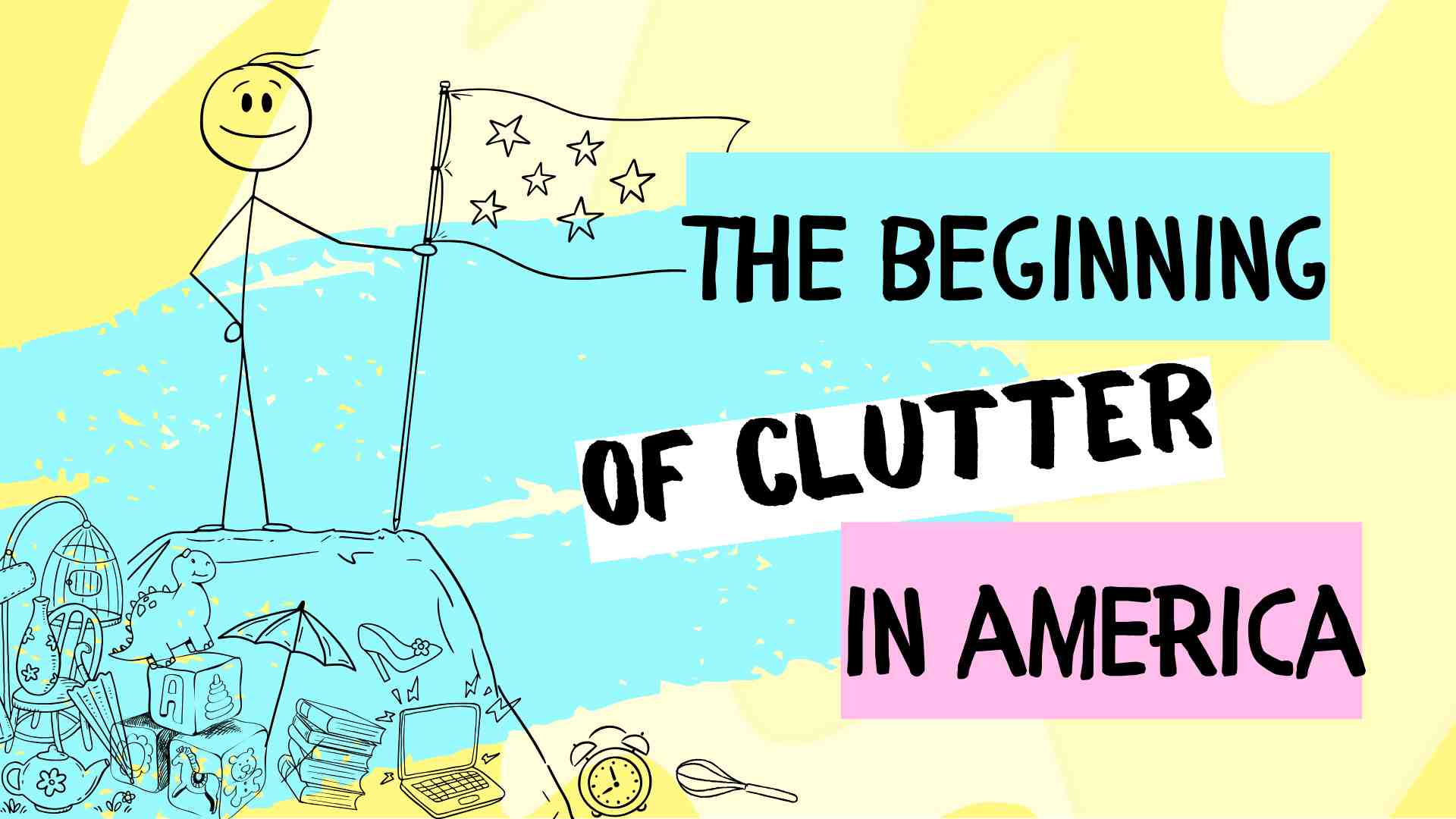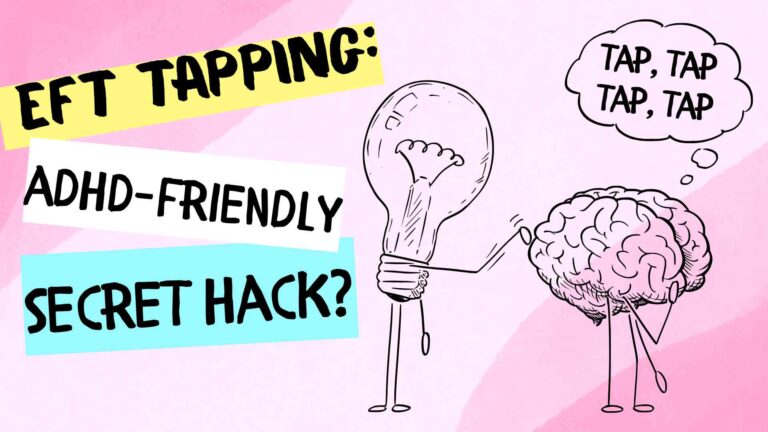The Beginning of Clutter in America

For those of you visiting this website, we are in a special class of people. We have a reputation of being highly disorganized and messy.
I would like to argue that it wasn’t always this way in America. For younger people, you never experienced a world without Internet, and simpler choice of products in stores. You are part of the tsunami of commercialism that impacts your life with overwhelm and objects.
It’s true, there is a spectrum of disorganization and clutter among us. For cases of extreme hoarding, there is a mental component that a trained mental health professional needs to address.
But for everyday, messy houses and lives, what is acceptable, and what is too far? How can we push back the marketing pressures that surround us daily?
Table of Contents
- Our houses were clean – at some point
- Too many choices
- Electronics, apps, and gadgets
- Marketing perfected
- Thrift store euphoria
- Minimalism pushback
- Where does this leave you?
Our houses were clean – at some point
I remember growing up in a very disorganized, messy house. To be fair, it was contained within certain zones. As a child, it affected me. I remember the annoyance I felt, turning me into an aggressive cleaner. I think that was my response to trying to bring some element of control to the situation.
What is odd to me is that I kept a very clean and tidy bedroom and even made my bed as a kid. This contradicts the person I am now, but I owned practically nothing back then. Now I own so much!
Another reality check. My parents raised us in a era when there were no big box stores, no Costcos or Walmarts. We only had dimestore and small, variety stores that were limited. Even our closets were small! Historically, we owned less and didn’t need grand walk-in closets and additional amounts of overflow space.
In a world without Costcos and Walmarts, we owned less – we didn’t need grand walk-in closets and additional amounts of overflow space.
-Renee’s Rabbit Hole
As more imported cheap junk was brought into the country, and new store distribution points built, accumlation followed. Our parents didn’t have the skills or experience to deal with all the “stuff”.
I recall when our walls were bare at home. A new direct distribution company, “Home Interiors and Gifts” put an end to that. Housemakers were tempted at in-home parties of neighbors and friends to step up their home decorating game. You have to remember, there was no online shopping back then, and home parties doubled as social fun time.
Home Interiors offered coordinated arrangements that took the guesswork out of dressing our walls and shelves. Thus, the beginning of the cluttered house began.
Too many choices
In the late 1980s I took a class on psychology of marketing. I still remember the professor pointing out the opportunity to expand sales by offering multiple versions of a product.
Within a few years, the tidal wave of choices had hit store shelves, reaching a ridiculous quantity. The term “decision fatigue” was now thrown out to address the issue of overwhelming the consumer.
Consider air fresheners, for example. Your sniffer can now delight in Apple Blossom, Springtime, or Ocean Waves. Go into the pet aisle (by the way, in the 1970s there was a 5 foot section for the pet aisle – now it’s 3 full walk-through aisles in Walmart).
You can get special puppy food for every age and stage. Recently, Walmart just intalled a REFRIGERATOR. Yep, because our little Muffy eats gourmet – only the best for her! Don’t get me started on the pet toys.
Even in the grocery stores we have amazing food choices. Thanks to refrigeration and shelf life technology, produce is transported across our continent. In the Midwest, we can enjoy exotic avocados and pineapple, not common in our climate.
How about the baby market? What young parent doesn’t have all the necessary equipment equal to that of their own small store? Besides the necessary, the flood of toys is drowning our kids and landfills.
Targeted consumer marketing: we never had a chance.
-Renee’s Rabbit Hole
Electronics, apps, and gadgets
American’s obsession with electronics has followed the same fate, too many choices. Thanks to Apple and Microsoft, we have not only desktops, but laptops and tablets. Smartphones have spawned another must-have gadget to be replaced every 3-4 years.
Home gadgets themselves are so enticing. We so firmly buy in that they will make our life immensely better. From digital thermometers to fancy kitchen utensils, our drawers are packed.
Technology is creeping into our homes with smart appliances, lighting, and home security equipment. Online, we are showered with apps and software that promise to make our life easier.
Both the physical and digital clutter distract our minds and clog our thoughts.
Marketing perfected
Speaking of consumer psychology, it has ramped up into scary heights. Our online data is collected, our buying habits analyized.
Digital cookies track our movements, and serve up ads based on prior purchases. Savvy marketers carefully craft sales funnels that grab our brains and pocket books, tempting us with “this offer is yours if you buy product A today!”
The Ronco Company created “the names “Ronco” and “Popeil” and the suffix “-O-Matic” (used in many early product names) that became icons of American popular culture and were often referred to by comedians introducing fictional gadgets and As-Seen-On-TV parodies.
It seems like every house now had something bought from one of these “infomercials” (another term that didn’t exist before). The memorable promotions started filling advertising slots between our favorite TV shows. And they ALWAYS give you two products if you just act now.
We never had a chance.
Thrift store euphoria
“Thrifting” is now a verb in our society. Facebook Marketplace, Craig’s List, and Ebay are packed with selling what you don’t need anymore. Second-hand stuff is not junk, it is the toss-offs of the rich. There are some pretty good steals out there, too.
The price tags have us feeling like we are saving money, all while raking in more stuff we don’t need into our shopping carts.
Justify it how you will.
Minimalism pushback
This icky feeling of too much has had a backlash: the Minimalism movement. You can see it in simple home interiors. Social influencers talk about the 7-outfit closet: a paired down clothing list than can be mixed and matched for a variety of looks.
Youtubers like The Minimal Mom and Clutter Bug are making a fortune with videos aimed at viewers on how to declutter.
My kids feel the pain of too much. To make themselves feel better, they bring their stuff over to my house for storage. I hate to tell them, but that really isn’t how it works.
People now have the advantage of Amazon to “shop the look” with a few quick clicks to decorate their house. They have no issue tossing out one look for another, season by season. I always wanted the “JCPenny bedroom” but now realize it is void of personality of the owner.
I applaud the minimalist approach to an extent. It brings the discussion to the forefront clutter’s affects to our well-being. However, being too minimal leaves you at risk for being unprepared. This is in stark contrast to preppers, who are prepared for any type of catastrophe.
Where does this leave you?
How can a person with an ADD, naturally-disorganized mind, fight this? Your creative abilities leave you seeing the possibilites in everything – it’s a problem. Although this is a superpower, it contributes to the pile of hobbies, jobs, and favorite pastime paraphernalia building up in your house.
First of all, the point of this article is to make it crystal clear there are forces at work that are bigger than us. So be kind to yourself.
You can read any of Barbara Sher’s books that have very practical advice that extends to hoarding and clutter. For example, accept that your life is in different seasons, and when your interest has waned in one topic, likely you are done with it forever. At that time, it is OK to discard it (to a friend or the thrift store, of course!).
Discard objects more easily by taking the right attitude. I often like to think that the next owner needed it more than I – that the found object came into their life at the right time. And I made that happen.
Then there is the opportunity to make a little money on objects no longer in use. Many people take this strategy to fund new projects.
Lastly, accept some level of disorganization. The sterile, heartless home is not for us! We have vibrant personalities that need to show in our personal spaces. Our homes are our private sanctuary where new discoveries are made, and beautiful creations are born!
Why would we ever want to put an end to that? #inthistogether -Renee




